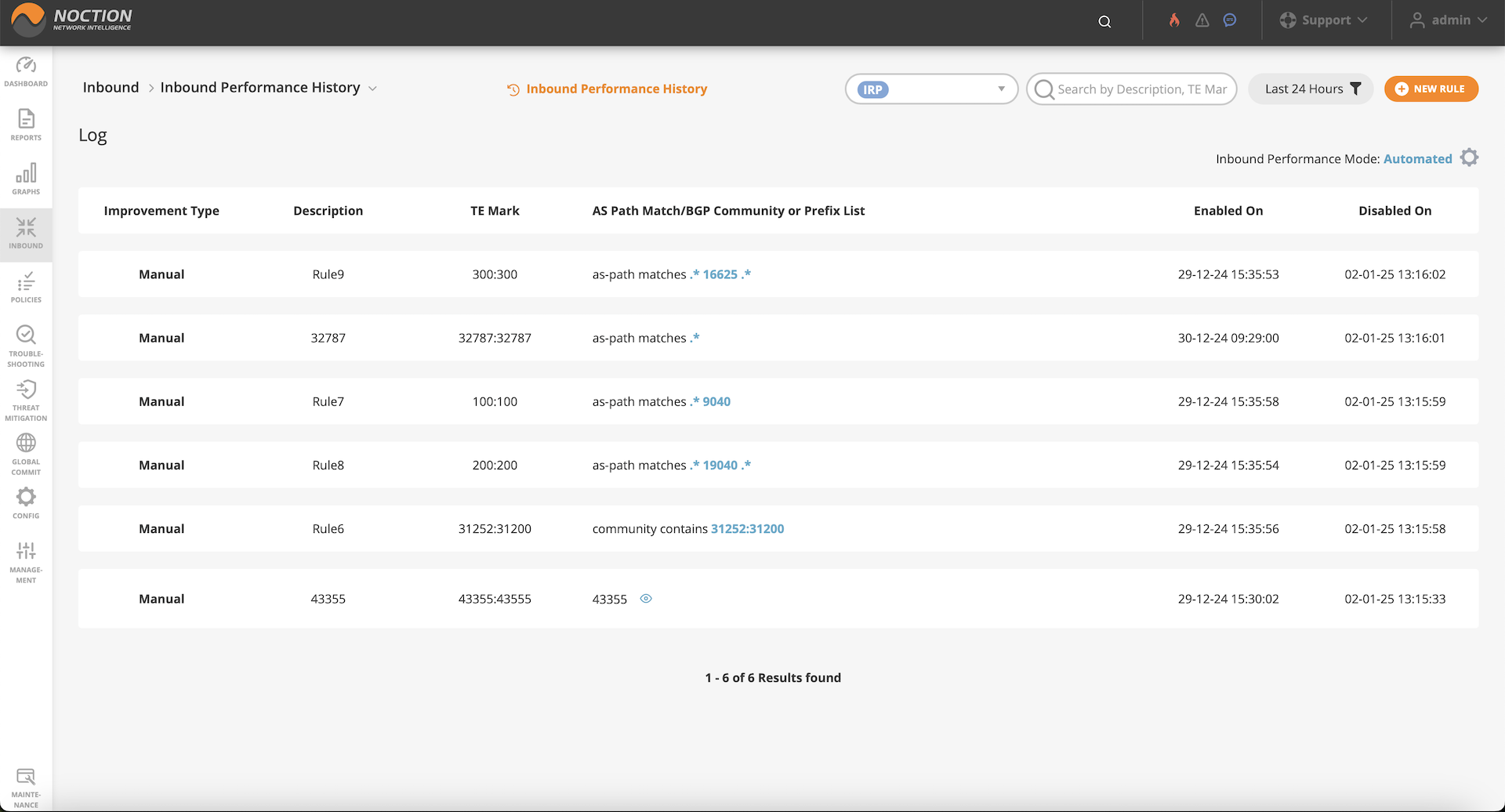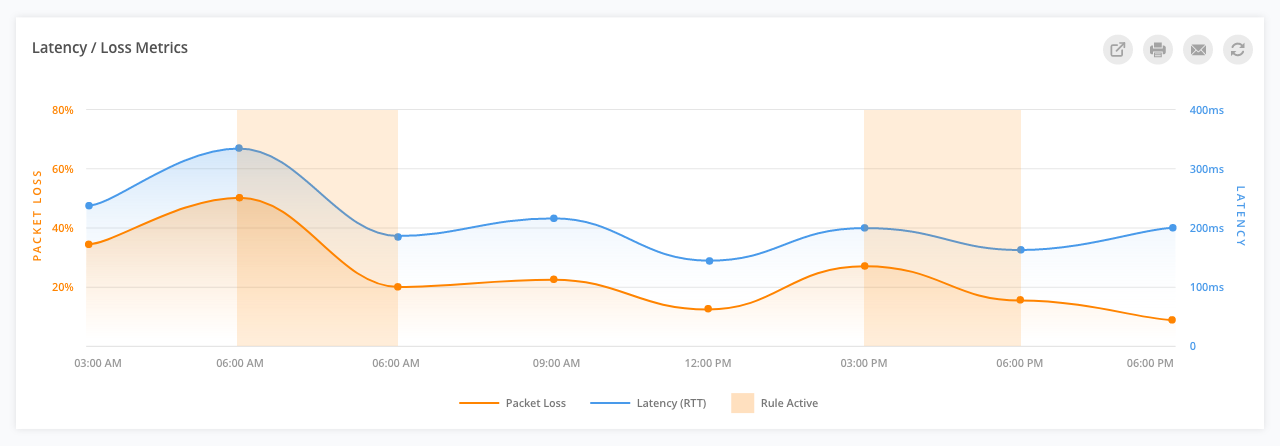3.6.2.1 Inbound Performance Feed #
- Status indicating whether the improvement is active/inactive
- Improvement Type indicating if the improvement is Automated (suggested and activated by the system), Moderated (suggested by the system but not yet enabled by the user) or Manual (manually enabled by the user)
- Description contains the name of the rule which triggered a particular action
- TE Mark represents the Traffic Engineering community used within a particular rule
- AS Path Match, BGP Community or Prefix List offers details on the matching criteria of the prefixes that are due to be improved as per the rule
- Confirmation shows the time until the next improvement actuality verification
- Initial Stats displays the packet loss and latency values for the provider in the rule before the improvement
- Improvement Results displays the packet loss and latency values for the provider in the rule after the improvement activation
- Enabled On displays the time and date the improvement was activated
- Actions provides the options to enable/disable or completely delete an individual improvement.
3.6.2.2 Inbound Performance History #
3.6.2.3 Inbound Performance Prefix List #
For more details on inbound performance rules, refer to section Inbound Perfromance Rules.
The Inbound Performance Prefix List page allows users to create, edit, and delete prefix lists, as well as search for rules that use prefix lists as matching criteria.

To create a prefix list, click the ADD LIST button. Introduce details in the corresponding fields:
- Name
- List of prefixes
3.6.2.4 Inbound Performance Rules #
- Description – introduce the meaningful details for the rule you are about to create
- Provider – select the provider that the rule will apply to
- Provider TE marker – indicate the traffic engineering marker (a list of BGP communities) which has special meaning in context of traffic engineering capabilities of a specific provider
- Improvement Activation Threshold (Packet Loss) – indicate the packet loss value threshold (% delta worsening from the initial statistical model values)
- Improvement Activation Threshold (Packet Latency) – indicate the packet latency value threshold (% delta worsening from the initial statistical model values)
- AS Path Match / BGP Community / Prefix List (refer to Inbound Performance Prefix List ) specify the selection criteria (filter expression or prefix list) of the prefixes that are due to be improved as per the rule
as-path matches as-path-regex
for example:as-path matches 1 2 10-20 [40 50-60]+ (. 200)*community contains bgp-community
for example:community contains 55:66
as-path matches .* 20 [^40 50] and community contains 55:66” would match an external prefix, the RIBIN record for which denotes:- as-path “90 20 60”
- community set “2:3 55:66 40:50”
As-path regex implements subset of juniper as path regex, relaxing group operator ‘()’ to support any expression within it. EBNF grammar:
regex = expr;expr = seq | subexpr;subexpr = repeat | term | group;seq = (subexpr, seq) | subexpr;repeat = ((group | term), "*")| ((group | term), "+")| ((group | term), "{", uint8, ",", uint8, "}";any_of = "[", {range | atom}-, "]";none_of = "[^", {range | atom}-, "]";group = "(", expr, ")";term = range | atom | wildcard | any_of | none_of;wildcard = ".";range = atom, "-", atom;atom = uint32;
- “9 5” matches only entire as-path “9 5”, whereas
- “.* 9 5 .*” can match “1 2 10 9 5 30”
- Group and repeat on or more times operators “(. 5 6)+” can match “1 5 6 2 5 6 3 5 6”
- Repeat at least m and at most n times operator “2{3,4}” can match “2 2 2”
- Range “5-10” can match “6”
- Any of operator “5 [6 8]” can match “5 8”
- None of operator “5 [^6 8]” can match “5 9”
- The complex regex “5-10 [1 20-30]{1,2} (5 7{3,4})+ [^10]” can match “6 1 2 5 7 7 7 11”, or “6 1 25 5 7 7 7 5 7 7 7 7 11”, but not “6 1 25 5 7 7 7 10” because the path can’t end with 10
3.6.2.5 Inbound Performance Report #












